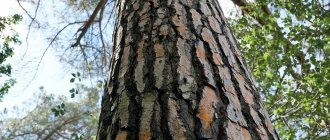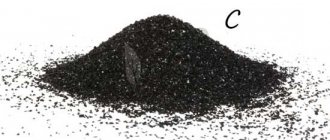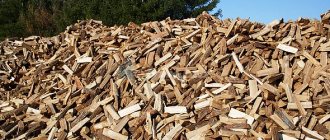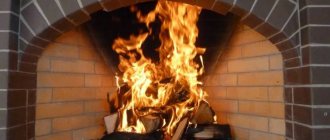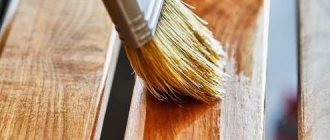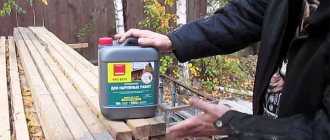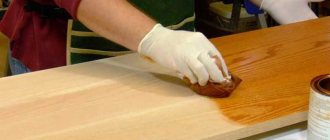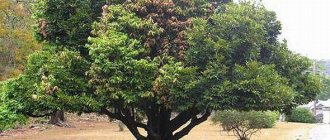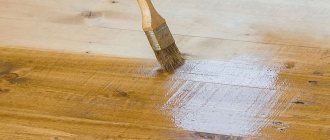Fires occur frequently in the everyday life of citizens. They are caused by careless behavior with fire or flammable materials. It is impossible to completely insure yourself against an emergency. No matter how hard a person tries. But it will not be superfluous to know what the ignition temperature of wood is.
The material becomes a source of fire, for example, in private homes in stoves. It is easy to light, but it is worth understanding in detail.
What is the combustion temperature of wood?
It’s hard to meet such a person who has not encountered wood burning in his life. Most people have gone on a hike at least once, which is not complete without lighting a fire. Some have a lot of experience in lighting house stoves and sauna stoves. Most people have tried wood burning at least once in their lives with a specialized device or a magnifying glass.
But not all people wondered at what temperature wood could ignite. Is there a difference between the combustion temperature of different types of wood? The reader has a unique opportunity to delve into these issues and obtain a lot of valuable information.
Temperature readings in the oven
The combustion process is associated with isometric processes, during which a large amount of heat is released. However, for stable combustion, wood must be heated to a certain degree. Factors contributing to the combustion of fuel wood:
- wood type;
- material moisture;
- volume of incoming air.
This is interesting: the heat of combustion of coal and charcoal.
One of the factors of combustion temperature is the type of wood
To ignite wood in a stove, it is necessary to heat the wooden surface from a separate heat source to a temperature of 120-150°C. With further heating, the percentage of pyrolysis gases increases and a fire appears. An important role in the occurrence of fire is played by:
- heating source power;
- cross section of wood;
- air flow speed;
- density of the material.
Along with the calorific value of firewood, its thermal power is of interest. Each type of wood burns in its own way - one allows you to get a high flame temperature, while the other gives the opposite picture. Most stoves have a heating power of about 6-8 kW, meaning the temperature in a wood-burning stove can reach approximately 500 to 1000°C.
How did man master fire?
Fire was known to people who lived in the Stone Age. People absolutely could not always make fire on their own. Man's first acquaintance with the combustion process, according to scientists, happened empirically. Fire, obtained from a forest fire or conquered from a neighboring tribe, was protected as a very expensive thing that people had.
Over the course of some time, people have noticed that certain materials have qualities that are more conducive to combustion. For example, dry grass or moss can ignite with just a few sparks.
Over the years, again empirically, people learned to make fire using improvised means. Historians call man’s first “lighter” tinder and flint, which produced sparks when they struck each other. Later, humanity learned to make fire using a twig placed in a special recess in the wood. The ignition temperature of the wood was achieved due to the intensive rotation of the end of the twig in the recess. Many Orthodox communities continue to use these methods today.
Much later, in 1805, the French chemist Jean Chancel invented the first matches. The discovery became widespread, and a person could safely draw fire if necessary.
Mastering the combustion process is considered a decisive factor that gave impetus to the formation of civilization. In addition, in the near future, combustion will remain such an argument.
conclusions
From all of the above, the following conclusions can be drawn:
- The most popular firewood for fires are: pine, birch, alder - due to the massive growth of trees of these species and their widespread distribution. Suitable for both cooking and heating.
- Low-quality firewood that can be used when there are no other options includes aspen, willow, and poplar. Perfect for boiling water or quick cooking.
- In extreme cases, when there are no trees, dried tall herbs or dung will help out.
- The most unsuitable firewood for a fire is spruce and fir.
- Here and below - for wood with a moisture content of 12%, which is quite consistent with not very old dead wood.
What is the combustion process?
Combustion is a process at the boundary of physics and chemistry, consisting in the transformation of a substance into the final product. At the same time, thermal energy is released in huge quantities. The combustion process is mainly accompanied by the emission of light, which is called a flame. Also, during the combustion process, carbon dioxide is released - CO2, an excess of which in an unventilated room can lead to headaches, suffocation and even death.
For the process to proceed normally, a number of mandatory conditions must be met.
First of all, combustion can only happen if there is air. In a vacuum, the combustion process is unrealistic.
Second, if the area in which combustion occurs is not heated to the ignition temperature of the material, then the combustion process will end. For example, the flame will go out if you immediately throw a large log into a newly lit stove without allowing it to heat up on very small firewood.
Third, if the subjects of combustion are damp and highlight liquid vapors, and the burning rate is still low, the process will also end.
Design protection measures
Fire protection measures for most wooden houses and other buildings are provided by appropriate design solutions, as well as by treating them with special chemicals (fire retardants).
Security of this type is realized by increasing the mass of individual elements, excluding pointed ribs and strongly protruding parts (“sharing of edges”), and using wood elements devoid of voids.
Heat-resistant insulation materials and fire protection of the surfaces of wooden structures with special coatings are also used. Protective coatings are used in the form of asbestos-cement (gypsolite) sheet blanks and plaster up to 1.5 centimeters thick.
In addition, to reduce the flammability index, the number of structures with parallel wood elements and voids between them is deliberately reduced during design.
Additional measures to counter the spread of fire require compliance with the standards for the formation of fire breaks.
To this we can add the division of buildings with special partitions and the appropriate arrangement of wall openings (windows and doors) and fire-resistant roofs. All these measures make it possible to strengthen the structure in terms of its ability to withstand the spread of fire.
At what temperature does wood ignite?
Pyrolysis - the process of wood rotting at high temperatures using CO2 and combustion residues - occurs in three phases.
The initial flows at 160-260 degrees. Irreversible changes begin to occur in the tree, ending in fire. The ignition temperature of wood fluctuates around 200-250 degrees.
The second phase of pyrolysis is 270-430 degrees. Wood begins to decompose under the influence of high temperatures.
The third phase is typical for a lit fire or a heated stove. The combustion temperature of wood on the Celsius scale in the third phase is 440-610 degrees. Under such conditions, wood in almost any condition will catch fire and leave behind coke.
Different types of wood have different tanning temperatures. The combustion temperature of pine, which is not the most flammable tree, is 250 degrees. Oak will ignite at 235 degrees.
Rare types of firewood
Oak
– the best firewood for the stove. The wood is dense, burns for a long time, gives high heat transfer, and is very economical, because compared to other firewood, much less is consumed to heat the same area. Due to its high cost, it is often used as an additive to other wood. A pair of oak logs will make the burning more intense and longer.
Good oak firewood comes from middle-aged trees; when burned, they release a pleasant tart aroma. Oak firewood is ideal not only for stoves, but also for fireplaces.
Excellent, but also one of the most expensive - alder
firewood. They burn hot, without smoke or soot, spreading a pleasant aroma.
Alder cannot be confused with any other firewood; when cut, it has a color from yellow to deep red. Perhaps this is the best firewood for a fireplace; it burns with a mesmerizing, even flame of a beautiful color. A big plus is that alder firewood lasts a long time and can be stored for future use for 5-6 years.
Rare firewood includes linden
. Although linden is common, linden firewood is rare. The wood is hot, although it takes a long time to burn, but then the stove heats up very quickly. The aroma that comes from linden when burned has healing properties. A bathhouse heated with linden firewood is useful for colds, diseases of the bronchi and lungs, and has a beneficial effect on the condition of the skin.
Regardless of what type of firewood you purchase, make sure that the wood is not rotten. The benefits of rotten mushrooms are zero. In order for the wood to burn, giving off maximum heat, it must be dry. Undried wood burns poorly, produces a lot of smoke and little heat.
For thousands of years, our ancestors used wood (firewood) as fuel. And today, despite the widespread use of natural gas or coal, they remain a popular type of fuel.
At the dacha or in the countryside you can’t do without them. Wood from different trees can be used as fuel. They all have their own characteristics.
Which wood burns better and which burns worse?
Dry wood burns best. Wood soaked in moisture also burns, but it takes considerable temperature and some time to remove and evaporate the moisture. This process is in most cases accompanied by a distinctive hissing sound. Not everyone knows that when “damp” wood burns, vinegar acid is released. This fact shows up very poorly on furnace equipment and on the overall combustion efficiency. It is highly recommended to use dry firewood, and also buy firewood in the spring so that it has time to dry before the cold weather arrives.
Coal
I mentioned this type of natural fuel for a reason, because firstly, coal is the most natural wood firewood - albeit very “old”, and secondly, despite the fact that it does not occur naturally on the surface of the earth , they can sometimes be acquired in field conditions - near rural boiler houses (where they are dumped in a heap or even lying on the road) and on railway lines (where they spill out of cars). I know fishermen who have used it many times (especially during the USSR).
- Fire power: 2.79 de.
- Calorific value: 10500 kWh/m³.
- Combustion temperature: 1000 °C.
- Burning time: very long.
- Flame: even, hot, with characteristic smoke.
- Difficulty of lighting: the highest. Under the coal, you will first have to make a small fire from ordinary firewood.
What determines combustion efficiency?
Combustion efficiency is an indicator that is determined by thermal energy, which does not “fly down the chimney”, but is supplied to the furnace and heats it. This indicator is influenced by several factors.
First of all, this is the integrity of the stove structure. Gaps, cracks, excess ash, unclean chimney and other damage make combustion ineffective.
The second key factor is the density of the tree. The highest densities are found in oak, ash, pear, larch and birch. The smallest are spruce, aspen, pine, linden. The higher the density, the longer a piece of wood will burn, which means the longer it will release heat.
Bird cherry
This tree often accompanies alder and willow, although it is not so common. I still don’t know anything about the exact calorific characteristics of bird cherry. However, according to all estimates, it should stand on the same level as the oak tree, because its density is close to it - which we were repeatedly convinced of when preparing bird cherry firewood, which differed from others in its heavier weight. Tests have shown that they flare up quite difficult (about the same as elm ones), the flame is quiet and even, and they form few coals. But while they are burning, they emit heat at the level of alder, or even a little more. It is quite possible to warm yourself and cook food on bird cherry logs. The only “but” is that all the bird cherry crackers that we came across - both standing on the root and lying on the ground - were saturated with moisture. It is possible that when dried, this tree will perform much better.
Can a fire happen in a bathhouse at high air temperatures?
This is theoretically possible, but almost impossible. In order for wood to spontaneously ignite in a bathhouse, the ambient temperature must be about 200 degrees. Not a single bathhouse, and especially not a single person, is capable of this.
The record for staying in a sauna belongs to a Swede who was able to hold out for 17 minutes at a temperature of 110 degrees. For many people, a temperature of 90 degrees is considered the maximum possible. With such warming of the air, the load on the heart sharply increases and there is a chance of fainting.
It is still recommended not to leave a bathhouse or steam room heated to more than 100 degrees for a very long time for fire safety reasons. Although the ignition temperature of wood starts at 200 degrees, caution never hurts.
Behavior of structures during a fire
The peculiarity of the destruction of wooden structures is that upon direct contact with open fire, they are destroyed (charred) at an average speed of one millimeter per minute.
| Smallest section size, mm | Wood charring speed V, mm/min | |
| glued | whole | |
| 120 mm or more | 0,6 | 0,8 |
| Less than 120 mm | 0,7 | 1,0 |
As a result of this, the initial cross-section of elements made of wood is reduced, and at the same time their strength decreases. The consequence of these processes is the complete destruction of all components of these structures.
When considering the nature of the behavior of wood structures, it is necessary to take into account the design features of the material used, which can be represented by the following varieties:
- homogeneous wood pulp;
- glued reinforced beams;
- plywood structures.
Homogeneous materials under fire conditions behave in the usual manner discussed above. As for structures with complex compositions (floor beams, for example), manufactured by gluing, their behavior during combustion is significantly influenced by the heat resistance of the adhesive compositions used.
Fire safety requirements when handling fire
You must always remember that when handling fire, the key to successful actions is compliance with fire safety rules. Make a few conditions and protect yourself and others from fire.
1. The ban on making fires in the wilderness in the summer was not introduced without reason. In summer, the chances of the forest floor catching fire and quickly starting a fire are much higher than during the rest of the year.
2. When making a fire outdoors, first of all, dig a small fire pit, removing the layer of turf on top with a shovel. Subsequently, it would be a good idea to return the top layer of soil to its place.
3. In order to localize the fire, it is recommended to surround the fire with a fence made of stones or bricks.
4. There must always be a fire extinguishing agent in the walking distance area: a fire extinguisher, sand or a container of water.
5. When extinguishing a fire, first of all, make sure that all the coals have gone out and the fire will not flare up again. To do this, it is recommended to fill the fireplace well with water, sprinkle it with earth or lay it with a top layer of soil.
6. There is no need to leave children face-to-face with a fire source. This will lead to bad results.
7. When using a stove or fireplace, it is not necessary to keep flammable objects or ignition materials very close to the combustion chamber. It would be a good idea to make the floor covering next to the combustion chamber from a material that does not burn (steel sheet).
8. It is necessary to maintain the stove in working condition: seal all cracks that appear in a timely manner, and sometimes remove the ash.
9. The foundation for the furnace must be made of brick. Wooden scaffolding should not be used for such purposes. This is dangerous due to the collapse of the entire structure.
10. The chimney in the attic should be insulated with non-flammable material; flammable materials should not be stored in the attic.
11. You cannot completely close the stove damper without making sure that the combustion process in the combustion chamber has ended. Otherwise, suffocation from excess carbon dioxide may occur.
Finally, about burning coal dust
The fine fraction remaining from ordinary coal is also a valuable fuel. The problem lies in the loading - most of the dust immediately spills into the ash pan. If you load it on top of firewood, the access to oxygen is blocked and combustion worsens. In such cases, you can use 3 methods:
- Dedovsky. Coal dust is mixed with water, made into cakes and dried in the sun.
- Briquetting. If you have a lot of dust, it makes sense to make or order a screw press for forming coal briquettes at home.
- Add water to the fine fraction and load it into the firebox in old plastic bags.
The last method is the simplest and fastest to implement. Water is added to the dust in a ratio of 1:10, the substance is thoroughly mixed and placed in bags. The boiler is accelerated to operating temperature using wood, then 2-3 such portions are loaded into the firebox. The method is described in more detail in the video:
Watch this video on YouTube
Wood burning
The combustion process of wood is an isothermal process that is accompanied by the release of heat. In order for wood to catch fire, it must first be heated to combustion temperature.
Wood heating
Heating is the heating of a section of wood from an external heat source to the combustion temperature. The heat source can be a match, a nearby burning piece of wood or wood chips, or anything else that can warm and heat up to the required temperature. When the temperature of the heated area reaches 120-150°C, a very slow and gradual charring of the wood begins, with the formation of self-igniting coal. When the temperature reaches 250-350°C, active thermal decomposition of wood into its components begins. A noticeable charring layer is formed on wooden surfaces, which begins to smolder (burn without a flame). At the same time, white (brown) smoke begins to emerge from the charred layer. The combustion process itself does not yet exist. If you stop heating, the fire will not occur. The presence of smoke only indicates that the surface of the wood has already warmed up sufficiently and its thermal decomposition into gaseous components has begun. White smoke is nothing more than the products of thermal decomposition of wood, flavored with a decent portion of superheated steam.
Outbreak of gas generators
With future heating and temperature increases, the thermal decomposition of wood into gaseous components will intensify. The process of thermal decomposition (pyrolysis) will go deep into the wood mass. The concentration of gas-generating gases in the heating zone will reach a critical level and they will ignite (flash). The outbreak will take place at the border with the edge of the white smoke and will spread throughout its entire volume. A light yellow flame will appear. The temperature of the heating zone can increase sharply due to the heat from the combustion of gas generator gases. The flash point of flammable gas generator gases is within the range of 250-300°C. This is the temperature at which the process of ignition and combustion of the wood itself becomes theoretically acceptable.
Wood ignition
If you continue to heat the wood, it will ignite. This is the first stage of combustion, during which energy supplied to the system from an external source leads to a sharp acceleration of the thermochemical reaction. Experience shows that under natural conditions, wood ignition occurs at temperatures from 450 to 620°C.
The flammability of wood is related to its volumetric weight, humidity, the power of the external heating source, the cross-sectional shape of the wooden element, the speed of air flow (draft), the position of the element in the heat flow (horizontal, vertical), etc. It is important for the combustion process density of the material. Light, porous alder or poplar wood burns faster than dense wood (oak, etc.). Wet wood is more difficult to ignite, since before it ignites, you need to spend an additional amount of heat to vaporize water. A slowing argument is also considered to be the very high thermal conductivity of damp wood; the ignited upper layer cools down faster. Round and heavy parts burn worse than those with a rectangular profile and small cross-section, with sharp ribs and a relatively developed side surface. The unplaned surface of the components, similar to loose wood, ignites faster than the smooth surface.
A fundamentally important and mandatory requirement for the ignition and combustion of any substance is considered to be a sufficient flow of oxygen and a concentration of combustion heat, which is not dissipated, but is used to warm up new adjacent areas of the fuel to the ignition temperature.
Wood burning
If the above requirement is met, then the flame that appears during the flash no longer goes out, but covers the entire charred part of the wood. This means that the wood has ignited, and the ignition process has turned into a combustion process. A log (chip), if removed from the fireplace, will burn in the air on its own.
For its part, wood combustion consists of two phases - the flame phase and the smoldering phase.
In the smoldering mode, the predominant process is the combustion of solid pyrolysis products (coals). At the same time, gas generator gases are released slowly and cannot ignite due to their low concentration. The gaseous products cool, condense and produce rich white smoke. When a fire occurs in smoldering mode, air moves into the thickness of the burning wood
In the flame combustion mode, the leading process is the combustion of gaseous pyrolysis products, which is characterized by the movement of hot gases outward.
The two phases of combustion are inseparably linked and will last as long as three conditions are met in the combustion zone: the presence of fuel, the presence of oxygen and the concentration of the desired temperature.
Wood attenuation
If one of these conditions is not met, then the flame goes out and the overall process of ignition and combustion either ends or is exactly repeated from the beginning, depending on the constancy of the external heat source.
Useful tips
The high combustion temperature of firewood is the key to efficient heating of a private home. Even manufacturers of TT boilers and wood-burning stoves indicate in the instructions that the best efficiency of the heat generator is observed precisely when operating at maximum mode.
Finally, we will give a few recommendations on how to achieve high heat output, and therefore energy savings:
- If you have to purchase firewood, do not buy low-calorie species, such as willow and poplar. The first is too saturated with moisture, and the second has low density. Remember that you pay for cubic meters, not kilograms of solid fuel.
- Dry the logs as much as possible. Freshly cut wood reaches a moisture content of 20-25% after at least one and a half years of drying in an open woodshed.
- Try not to operate the boiler in the vaunted smoldering mode, which supposedly helps save money. As you can see from the photo, the fire temperature during normal combustion is 800 °C, and smoldering wood will give no more than 450 °C. You can't heat a house with such heat transfer.
- Carbon monoxide CO is not only flammable, but also toxic. Trying to save fuel, we cut off the air supply to the firebox and provoke its release. Not only is potential fuel wasted outside, but it also pollutes the environment.
- Do not supply air to the firebox from the street, so as not to waste energy heating it. When choosing a solid fuel boiler, pay attention to models with a heating channel. They are easy to distinguish by the fan installed on the top panel, and not in the ash pan door.
Of course, it is impossible to continuously maintain a high temperature in the chamber, because the need for heat at home also changes and depends on many factors. To accumulate excess energy, there are heat accumulators, also known as buffer tanks. As a last resort, purchase a heat generator with forced draft, where during periods when the fan is turned off, the air supply is completely blocked.
Self-ignition temperature of wood
The low temperature to which wood must be heated in order for it to ignite is called auto-ignition temperature .
The self-ignition temperature of wood is 250-300°. This can be explained by the fact that when heated, wood releases flammable combustible gases (volatile products), and also a decent amount of oxygen.
As a result of the oxidation process of volatile substances with oxygen in the air, wood spontaneously ignites at temperatures relatively lower than those of other solid substances (coal, charcoal, etc.). The self-ignition temperature of wood also depends on the degree of its grinding. The more the wood is crushed, the lower its auto-ignition temperature. So, for example, the self-ignition temperature of wood chips is much lower than that of wooden blocks. This can be explained by the fact that the surface of 1 kg of chips is larger than 1 kg of bars. And from a larger wooden surface, when heated, more volatile substances are released that are capable of oxidation and self-ignition.
Smoldering
Home → Encyclopedia →
Smoldering is a mode of combustion of materials and substances with the formation, after the process of their pyrolysis, of a solid carbonized phase with the afterburning of the products of its heterogeneous oxidation in a gaseous environment. Materials prone to smoldering have a particularly high and specific fire hazard . The process of their combustion initially has a latent period, when the emerging source is difficult and sometimes impossible to detect. However, after some time, when the situation changes associated with changes in oxygen concentration, pressure, and the size of the fire, smoldering can switch to a flaming combustion mode. For example, smoldering, which began at the base of a pile of sawdust 0.85 m high, penetrates the surface in the form of flaming combustion within 10 days.
As a rule, porous materials or materials in a crushed state are prone to smoldering. These include, in particular, materials of plant origin (paper, cellulose sawdust, laminated boards, latex, silicone and other rubbers, natural leather, some composite materials and thermosetting plastics). Melting materials, including porous ones, as a rule, do not exhibit the ability to smolder.
from fire extinguishing that materials prone to smoldering are extremely difficult to extinguish. This is due to the fact that the smoldering process can occur at low (about 2% vol.) oxygen in the environment. The results of scientific research have shown that the most effective means for extinguishing smoldering fires are water and special gas fire extinguishing compounds. When extinguishing a smoldering fire using a volumetric method, the most effective is the use of multicomponent compositions with a density close to the density of air, having higher thermal conductivity , heat capacity and diffusion. It is preferable to use gas compositions that contain helium.
To effectively extinguish a smoldering fire in a room using gas agents, it is necessary to reduce the oxygen concentration to 0-5% by supplying a fire extinguishing agent and maintain this level for at least 1200 s. The time for supplying the standard mass of fire extinguishing agent to extinguish a smoldering fire must be at least 300 s.
Lit.: GOST 12.1.044-89. SSBT. Fire and explosion hazard of substances and materials. Nomenclature of indicators and methods for their determination; Monakhov V.T. Methods for studying the fire hazard of substances. M., 1979.
| | | | | | | | | | | | | | | | | | | | | | | | | | | |
I like (19)
Legal regulation
0 0
A new fire safety declaration form has been approved
Published: May 12, 2022 Legal regulation
A new fire safety declaration form has been approved
Published: May 12, 2022 The administrative regulations for registering a fire safety declaration and the new form of the fire safety declaration came into force on April 28, 2020 by Order of the Ministry of Emergency Situations dated March 16, 2020 No. 171. Previously, the application was drawn up in a free form and may not contain the mandatory requirements provided for in the approved form information.
- Approval of STU - analysis of the unreasonable refusal of the Ministry of Construction. Mayhem. Part 2.
- Vacation of employees of the Ministry of Emergency Situations. Leave to the Ministry of Emergency Situations
- Violation of fire safety: types of liability and penalties
